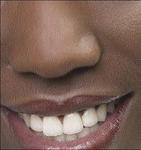
Everybody should want a bright, white smile and your smile and teeth are perhaps the first things that other people notice about you. For that bright, white smile you may be considering tooth whitening and there are many questions which are generally asked by the public about the topic such as:
Is it safe?
Does it actually work?
Will it harm my teeth?
Do over-the-counter products work?
How long will my teeth stay white after treatment?
I will try to answer these and other questions in my article today.
Tooth whitening is healthy, safe, and highly effective and will get your teeth whiter. The more recent whitening products contain calcium phosphate and potassium nitrate that rebuild enamel and restore lustre by remineralisation.
The whitening products also reduce the incidence of cavities; reduce sensitivity; increase enamel hardness and provide longer lasting whitening.
Coffee stain
Discoloration of teeth can be either on the surface or within the tooth structure. These stains can be caused by food and beverages such as coffee, tea, soft drinks, wine, tobacco products and the natural ageing process. Discoloration can also be caused by some medications, for example, tetracycline, injury of one or more teeth, poor oral hygiene or a combination of these factors.
Whitening systems contain carbimide peroxide or hydrogen peroxide which are the bleaching agents. When applied, these bleaching agents are broken down and oxygen is released and enters the tooth enamel and dentine. This bleaches out the discoloured areas. The structure of the teeth is not changed; the colour of the teeth simply become lighter.
Whitening your teeth under the supervision of your dentist has been proven to be safe in clinical studies conducted over many years. Whitening can either be done in office by your dentist or at home.
In-office whitening
A procedure that is done in the office is called chair-side bleaching and it may require more than one office visit. Each visit may last between 30 and 60 minutes. During chair-side bleaching, the dentist applies either a protective gel to your gum or a rubber shield to protect your oral soft tissue. A bleaching agent is then applied to the teeth and a special light or laser may be used to enhance the action of the agent. After this treatment, the teeth will appear brighter.

Home products
There are several types of products available for use at home which can either be dispensed by your dentist or purchased over the counter.
By your dentist, a custom-made fitted mouth guard will be prepared to fit your teeth precisely. A whitening gel is placed in the mouth guard to be used twice daily for two weeks or overnight for one to two weeks.
Some teeth can become sensitive during the treatment period but in many cases this sensitivity is temporary and should lessen once the treatment is finished. Some people will experience soft tissue irritations either from a tray that doesn't fit properly or from solutions that may come in contact with the tissue.
Using toothpaste
Toothpaste helps to removesurface stains through the action of mild abrasives. Whitening toothpaste has special chemicals or polishing agents that provide additional stain removal effectiveness but they do no the intrinsic colour of the teeth.
The treatment is long lasting but exposure to coffee, smoking, red wine and so on will gradually darken your teeth again. After an initial treatment, most people will need follow-up treatments every six months.
After you have the white smile you have long desired, it is important to keep it that way; practise good oral hygiene and always remember to brush after consuming staining foods or beverages.
Dr. Dennis Jones is a general dentist in private practice; email: yourhealth@gleanerjm.com

